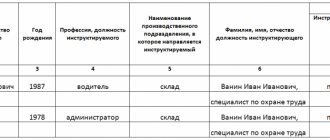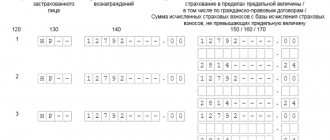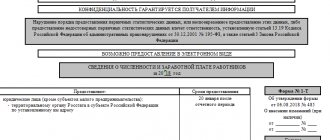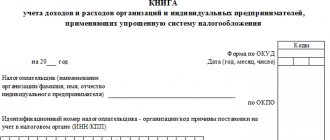Why do we need a civil defense induction program?
Employers were required to prepare employees for actions in case of emergencies and military operations even before the amendments to this Regulation came into force. Thus, organizations were charged with planning and organizing civil defense events, developing training programs and training workers in civil defense through course training, creating a database of training materials and maintaining it in working order (clause 5 of the Regulations, clause 1 of Article 9 of the law of 02/12/1998 No. 28-FZ).
Development of induction training for civil defense is a new function assigned to the employer. The purpose of such instruction is to give the employee knowledge and understanding of how to act in an emergency situation, in order to avoid panic and save the lives of oneself and others if this actually happens.
According to the provisions of the laws of the Russian Federation “On Civil Defense”, “On the Protection of the Population and Territories from Emergencies”, citizens must have the following knowledge and skills, which they can obtain, including by undergoing introductory briefing on civil defense (a sample briefing program is attached to end of article):
- know the basic requirements of legislation in the field of civil defense and the rules of behavior in conditions of wartime dangers,
- understand the principles and methods of emergency protection,
- be able to provide first aid to yourself and others in case of injuries, wounds and damage to the body,
- understand and be able to act on public warning signals,
- know about personal protective equipment, be able to make the simplest of them and use them correctly,
- in the event of a chemical attack or accident, be able to disinfect your home, workplace, surrounding area,
- be able to build simple shelters and use them and shelters,
- know how to protect those who cannot do it themselves (children, immobile patients, the elderly, etc.), and also assist them during evacuation.
Such knowledge, obtained when a standard introductory briefing on civil defense is used, can be useful not only in the context of possible military conflicts, but also in the event of a terrorist attack, man-made disasters, transport accidents, chemical industry enterprises, nuclear power plants, natural disasters, destructive earthquakes, floods, fires, etc.
Civil Defense and Emergency Training
Upd: For more information about training in the field of civil defense and emergency situations, see here.
Federal laws No. 28-FZ “On Civil Defense” and No. 68-FZ “On the Protection of the Population and Territories from Natural and Man-Made Emergencies” clearly indicate the need for organizations to conduct employee training.
Training in civil defense is mandatory, and managers undergo it at least once every 5 years in accordance with paragraph 4 of the Government of the Russian Federation of November 2, 2000 No. 841 “On approval of the Regulations on the organization of training of the population in the field of civil defense.”
Mandatory advanced training in the field of protection against emergency situations for heads of organizations and authorized employees at least once every 5 years is also provided for in paragraph 4 of the Decree of the Government of the Russian Federation of September 4, 2003 No. 547 “On training the population in the field of protection against emergency situations of a natural and man-made nature” .
On November 20, 2022, the Russian Ministry of Emergency Situations approved a sample program of course training for the working population in the field of civil defense 2-4-71-27-11.
The document is intended for heads of organizations as a methodological basis for developing course training programs for employees. The purpose of the course training is to increase the readiness of employees of organizations to skillfully and adequately act in the event of a threat and the emergence of dangers during military conflicts and emergencies typical for the areas in which the enterprise is located.
To conduct classes, a class leader is appointed by order of the head of the organization.
It is recommended to create training groups of up to 25 people.
Recommended educational and thematic training plan:
| No. | Name of lesson topics | Lesson form | ||
| 1. | Damaging factors of emergency sources characteristic of the location and production activities of the organization, as well as weapons of mass destruction and other types of weapons | Lecture | ||
| 2. | The procedure for conveying to the population the civil defense signal “ATTENTION TO EVERYONE!” with information about air raid, chemical alert, radiation hazard or the threat of catastrophic flooding, other hazards and the actions of the organization’s employees regarding them | Lecture | ||
| 3. | The procedure and rules for the use of personal and collective protective equipment, as well as fire extinguishing equipment available in the organization | Training | ||
| 4. | Actions of employees in case of an accident, catastrophe and fire on the territory of the organization | Complex lesson | ||
| 5. | Actions of the organization's employees in the event of the threat and occurrence of emergencies, military conflicts, the threat and commission of terrorist acts | Complex lesson | ||
| 6. | First aid | Training | ||
| 7. | Actions of employees of the organization in the conditions of negative and dangerous factors of everyday life | Lecture | ||
| Total hours 12 | ||||
On January 1, 2022, Decree of the Government of the Russian Federation of September 18, 2020 No. 1485 “On approval of the Regulations on the training of citizens of the Russian Federation, foreign citizens and stateless persons in the field of protection against natural and man-made emergencies” came into force.
It lists in detail all categories of citizens who need to undergo training in the field of emergency protection, the main objectives of training and the frequency of training for all categories of the population (upd: see a detailed article on this topic).
Who conducts civil defense training?
An employee who has completed the necessary training at the training center of the Ministry of Emergency Situations or has taken appropriate courses should develop an introductory briefing program in civil defense and carry out work with “newcomers.” Managers and their appointed specialists must undergo such training. The employee is responsible for conducting briefings, developing course training plans, conducting training and exercises for the workforce on civil defense and emergencies.
New employees must undergo induction training in civil defense (a sample for 2022 is provided below) within 1 month from the date of entry to work. The fact of the briefing is recorded and confirmed by the signatures of the instructor and employee in a special registration log.
How to conduct
According to Resolution No. 470, starting from 2022, all newly hired employees of organizations must take a training course during the first month of work. Although the need to conduct such events is enshrined in law, it is not superfluous to issue an order regulating who conducts briefings, with whom and in what time frame.
The procedure for conducting the briefing includes the following steps.
- The responsible person informs the employee of all the necessary information, or he or she is given an introductory civil defense instruction manual for self-study.
- The person in charge orally checks the knowledge acquired by the employee.
- The employee signs a copy of the instructions kept by the employer and receives his own copy.
- Information about the briefing is recorded in a special journal. This will allow, if necessary, to confirm the fact of its implementation.
The form of the journal is not legally fixed, but it is advisable to enter the following columns:
- date of;
- name of the briefing;
- volume;
- Full name and signature of the person being instructed;
- position and full name of the specialist who conducted the instruction, his signature.
Practical training can also be carried out at the enterprise in order to consolidate the acquired theoretical skills. The frequency of their implementation is recorded in the schedule, and the fact is recorded in a journal of a similar form.
Structure of the induction program in the field of civil defense
Since there is no standard form or sample civil defense induction program yet, you will have to compile it yourself. There are no clear requirements for the structure of the training program, but there are 3 main sections:
- introductory part,
- thematic briefing plan,
- a list of main issues on civil defense and emergencies discussed during the briefing.
When drawing up a program or instruction for induction training in civil defense, you can use standard sample training programs in the field of civil defense and emergency situations developed by the Russian Ministry of Emergency Situations (for example, the program approved by the Ministry of Emergency Situations of the Russian Federation on February 22, 2017 No. 2-4-71-8-14), use civil defense law No. 28-FZ and other regulations on civil defense and emergency situations. In addition, one should take into account the specifics of the enterprise’s activities, the possibility of its operation in wartime, location, personnel, etc.
Our article provides an approximate program of induction training in civil defense, which must be adapted to the specifics of your enterprise. There is no need to approve the document with the Ministry of Emergency Situations; it is enough to have it approved by the head of the enterprise. The program is approved by order and drawn up as an annex to it.
What is included in the briefing?
A sample civil defense induction program should take into account that all organizations are different, located in different places, and, accordingly, emergency situations arise in them differently. There is little to worry about in the desert, and an ammonia explosion is more likely to occur in a refrigeration plant than in a pasta factory. Therefore, the instructions will have to be adjusted depending on the specifics of the organization’s activities.
The induction program for civil defense is drawn up at the enterprise, taking into account the following factors:
- the specifics of the enterprise - the field of activity, the nature of working conditions, harmful factors, the presence of workshops and departments that are dangerous from the point of view of emergency situations, flammable, explosive substances, poisons and chemicals, etc.;
- features of the organizational and personnel structure of the enterprise;
- features of the location of the organization - the presence of nearby hazardous production or strategically important facilities, railway tracks, etc.
Typically the training consists of the following parts:
- Introductory. Includes goals, timeframes and procedures.
- Thematic plan. It reflects the aspects covered during the briefing, preferably indicating the time it will take to study each of them.
- Questions for control.
- Plan of practical lessons for developing skills.
It is advisable to cover the following points during the briefing:
- regulatory framework in the field of civil defense and emergency situations;
- organization of civil defense and emergency situations in the region and at the enterprise;
- actions of personnel in the event of a threat of direct attack, chemical, radiation attack and other military threats;
- rules of behavior in the event of a natural emergency, both typical for a given area and uncharacteristic;
- procedure for actions in case of accidents and man-made disasters, both internal (within the enterprise) and external (happened from outside);
- behavior during the threat and commission of terrorist acts;
- first aid rules;
- measures to minimize damage and eliminate the consequences of emergencies.
When instructing workers, you can use both text and graphic materials, as well as multimedia tools (slides, training video programs). A typical civil defense induction program is not drawn up once and for all. It will be supplemented and changed if necessary. If there is no sudden reason for revision, then it is advisable to update the program at least once every five years. In addition, so that the knowledge gained does not lose its significance, it is useful to place civil defense posters in a publicly accessible place for information.
Contents of the introductory briefing on civil defense
The introductory part of the training program contains general information about:
- for training purposes,
- the persons to whom it is directed,
- venue,
- the order in which the results are presented.
The thematic plan for introductory briefing on civil defense can be downloaded for free from the link below. The plan provides a list of topics covered during induction and the estimated time spent on each topic.
The main issues covered during the briefing are a more detailed study of the thematic plan. Here are the questions our typical civil defense induction program includes:
- familiarization with the direction of the company’s activities, the structure of the civil defense system at the enterprise, the legislative framework;
- types of danger during war, during emergencies and fires, as well as types of protective measures;
- actions of enterprise employees in the event of various emergency situations - natural, man-made, domestic, as well as terrorist attacks;
- actions of personnel in case of fire;
- providing first aid to victims.
The text of the introductory briefing on civil defense can also include visual materials in the form of illustrations, floor plans, movement diagrams, location of fire extinguishers, etc.
An example of an induction program for civil defense is attached to the article. You can find more complete information on the topic in ConsultantPlus. Free trial access to the system for 2 days.
Who should be briefed?
Emergency training is carried out in organizations registered in the prescribed manner and using hired labor (workers) in their activities.
Emergency training is provided to:
- newly hired persons, regardless of their education, length of service by profession (position), citizenship;
- persons seconded to the organization for a period of more than 30 calendar days.
Emergency training is carried out within a period not exceeding 30 calendar days from the date of actual start of work (stay in the organization) of the employee (seconded person), then annually.
Information about the employment of new employees or the arrival of seconded persons to the organization is communicated against signature to the person responsible for conducting emergency training, by the personnel authority within a period not exceeding 7 calendar days from the date of the actual start of work (stay in the organization) of the employee (the seconded person).







